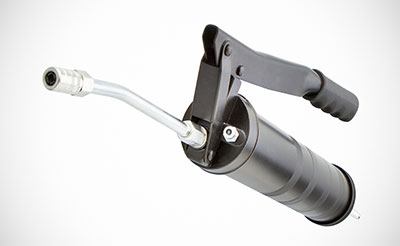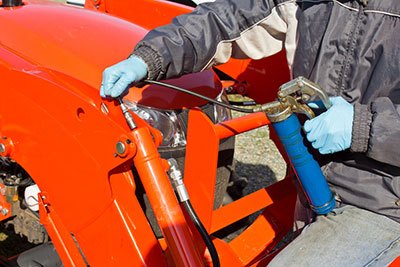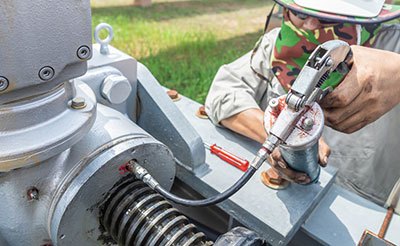If you need the best grease gun for your needs, you’ve come to the right place!
Our guide will show you the different types of grease guns available on the market today, and provide insightful directions to make the best decision.
Whether you’re searching for something simple or a more advanced model, we are positive there is something for your demands.
So, stay tuned, as we explain all types and their unique features!
Take away key points:
- There are various grease guns with multiple benefits to choose from
- Their main purpose is to keep your machines optimal, regardless of their type
- Examine all advantages and benefits to ensure the best use
Table of Contents
Most common types of grease guns: All you need to know
If you need to learn more about the specific grease guns, their advantages, and their disadvantages to make the best decision for the use, read our guide below. We will provide you with crucial information for more convenient use.
What are various grease gun categories?

A grease gun is an excellent tool used for the proper lubrication of machinery components. There are several different types of grease guns available, each designed to meet specific needs.
The most common types of grease guns include:
- manual (lever and pistol grip grease gun)
- pneumatic (pistol grip grease gun), and
- electric models.
1. Manual grease gun (lever and pistol grip grease guns)
Manual grease guns are the simplest and least expensive type of grease gun. They typically consist of a handle, plunger, and barrel with a nozzle at the end that is connected to a flexible gun hose. The plunger is used to force the grease through the nozzle and into the desired area. Manual guns require manual pumping action to generate pressure and dispense the lubricant.
There are two types of manual grease guns: lever grease gun models and pistol-grip grease guns.
A lever grease gun is the most common type. You can operate them by using a lever to create pressure forcing the grease out. These types of grease guns operate with a rigid pipe or locking grease gun coupler, as you need two hands when using a grease gun.
On the other hand, the pistol grip grease gun has a better ergonomic design. In addition, they require less effort to operate.
The main advantages of manual grease gun include:
- Low cost compared to electric or pneumatic models
- Easy to use and maintain
- Portable and lightweight
- Can be used in tight spaces where electric or pneumatic models may not fit
The main disadvantages include:
- Require more effort than electric or pneumatic pistol grip grease guns
- Limited pressure output compared to electric or pneumatic models
- Not suitable for high-volume applications
2. Pneumatic grease gun
Pneumatic grease guns use compressed air instead of manual pumping action to generate pressure and dispense lubricant. Pneumatic grease guns are a popular choice for lubricating construction equipment because of their high power output.
The pistol grip grease gun uses compressed air to force grease from the nozzle to the desired location, which can be more effective than other types of grease guns. They are often used in industrial settings where large amounts of lubricant need to be applied quickly and efficiently, offering a positive displacement.
The main advantages include:
- High pressure and accuracy when the dispensing lubricant
- Quick and easy application of lubricants to fittings
- Portable and lightweight
- Can connect to an air compressor or come with its air supply
The main disadvantages include:
- Can be expensive compared to manual grease guns
- Require an air compressor or other source of compressed air to operate
- Not as precise as manual grease guns, which can be used in tight spaces where pneumatic tools cannot reach
3. Electric grease gun
Electric grease guns use an electric motor instead of manual or pneumatic power to generate pressure and dispense lubricant.
Electric grease guns are a great tool for lubricating hard-to-reach areas. They offer several advantages over manual grease guns, including convenience, portability, and increased pressure.
Electric models are more powerful than manual or pneumatic models, making them ideal for heavy-duty applications such as automotive maintenance or industrial use.
The main advantages include:
- Convenience: Electric grease guns are much easier to use than manual ones. They require less effort and can be used with one hand.
- Portability: Electric grease guns are lightweight and portable, making them ideal for use in tight spaces or on the go.
- Increased pressure: Electric grease guns offer higher pressure than manual models, allowing you to apply more lubricant quickly and efficiently.
The main disadvantages include:
- Cost: Electric grease guns tend to be more expensive than manual models due to their advanced features and technology.
- Battery life: The battery life of an electric grease gun is limited, so you may need to recharge it frequently or invest in additional batteries if you plan on using it for an extended period.
- Risk of over lubrication: It is easy to apply too much lubricant when using an electric grease gun, which can lead to messes and damage to equipment if not monitored closely.
Valuable tips when using grease guns

Below you can find some of the most valuable tips when using the grease guns properly. The tricks include:
– To ensure that the proper amount of grease applied is used for bearing relubrication, use a vent plug on the relief port to remove any old grease and reduce pressure on the bearing. Use the calibrated delivery volume to ensure how much pressure and loading grease amounts there are, to ensure the best applying grease process.
– Always add extreme caution whenever you load different types of grease into the grease gun. You need to ensure the proper grease type and control the optimal flow rate in the flexible hose to prevent grease leaking and possible damage to the grease cartridge, bearing seals, grease nipple, and grease fitting points.
– When loading the grease gun and the new grease cartridge, take care to avoid introducing any contaminants into the lubrication points.
– Make sure that the gun is labeled with information about the appropriate type of grease. Find the appropriate point markers to ensure the best grease flow, even into the confined areas
– Keep all grease fittings, zerk fittings, or grease nipple points clean before attaching them to the grease gun nozzle.
– Carefully pump a small amount of grease from the dispensing nozzle before connecting it to the grease fitting.
– Verify that only the appropriate type of grease is being used at each location and label each point to quickly identify it. The paint markers or color-coded labels will guide you through the process.
– After use, store grease guns in a horizontal position, in a cool, dry place, keeping them unpressurized and clamped for the organization.
– Additionally, cover the coupler, bearings, and grease fittings with caps to make them free from dirt and contaminants.
– Finally, calibrate guns regularly so that they deliver accurate volumes of oil, to ensure the heavy-duty operations of your machines. This way, you can also keep grease cartridge grease nipples, trigger mechanism, and other grease gun parts optimal for further use.
Is a battery-operated grease gun better than other various models?
When it comes to grease guns, battery-powered grease gun models offer several advantages over other types. For the basic level, they are cordless and portable, making them ideal for a simple process, and use in tight spaces or remote locations.
They also provide more consistent pressure than manual models and require less effort when using a grease gun. Furthermore, battery-operated grease guns can be used with both standard 14-ounce cartridges and bulk-loading systems.
Battery-powered grease guns also have some drawbacks compared to other models. For instance, they tend to be more expensive than manual or pneumatic versions and require regular recharging of the batteries. Additionally, they may not be as powerful as electric or pneumatic models when it comes to delivering high volumes of grease quickly.
Overall, battery-operated grease guns offer a great combination of portability and convenience that make them an excellent choice for many applications. However, depending on your needs you may want to consider other types of grease guns as well.
How to select the best grease gun?

When choosing the best grease gun, you should consider various factors.
Look for features such as adjustable pressure settings, flexible hoses for tiny spaces, and quick couplers for easy connections.
You should also consider the type of fitting you will be using with your grease gun. You’ll see that standard grease fitting points can be found on most manual and electric models while specialty fittings may require a pneumatic model.
Finally, you should consider your budget when selecting the best grease gun. Prices can range from around $20 for basic manual models or pistol grip models up to several hundred dollars for professional-grade electric models.
By considering all these factors before making your purchase, you can ensure that you select the best grease gun for your needs at an affordable price.
FAQs
Should I get a manual or pneumatic grease gun?
You should get a manual grease gun if you work with a lower amount of grease. However, when you work with a higher amount of grease, you should opt for the pneumatic grease gun.
How does manual grease gun work?
The manual grease gun works in such a way that it uses a hand-operated plunger and forces the grease through a nozzle. Then, the grease applies directly to the desired area.
In addition, the plunger uses the trigger mechanism, precisely controlling how much pressure and grease will be released.
How do you adjust a grease gun tip?
To adjust a grease gun tip, you must remove the old cartridge first. You can unscrew it from the end of the grease gun, and then pull it off. Next off, choose the proper type and size of the tip necessary for your grease gun.
Various tips can easily fit the standard grease gun models; however, other models might need an adapter or similar grease fitting to use it properly. After you choose the best tip, screw it onto the grease gun’s end until it rests snugly into place.
And, you must check to ensure that there are no leaks when using your new grease gun tip.
What is the best manual grease gun?
The Bravex Heavy Duty Professional Grade Pistol Grip Grease Gun is the best grease gun available. It offers a maximum pressure of 10,000 PSI, and it also provides an ergonomic design for effortless performance and optimal use.
Do all grease guns for Zerk fittings?
No, not all grease gun models are designed for Zerk fittings. There are different types of fittings, so it would be best to examine the specifications of the grease gun you will use before the final purchase.
You’ll ensure the fitting is compatible with the type of grease gun you need and vice versa.
Conclusion
As you have seen, there are multiple types of grease guns, necessary for the optimal work of your machinery, and ensuring the best performance.
However, you must consider all advantages and disadvantages, and their main purpose is to ensure you use the best grease gun type for your needs.
